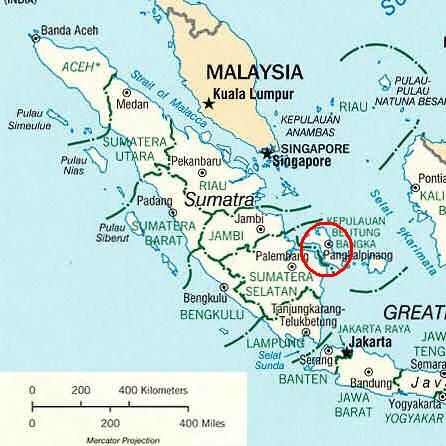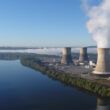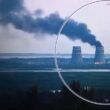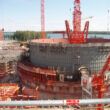The transnational dimensions of nuclear risk
By Sulfikar Amir, April 25, 2014

When Indonesia announced plans several years ago to build nuclear power reactors on Java Island—only a few days after Java's Merapi volcano had erupted—the news shocked many Indonesians, especially those living on the island. But the announcement also sparked concern in neighboring countries, most notably Singapore, a densely populated city-state where 5.6 million people are packed into less than 700 square kilometers.
Singapore knows very well how it feels when neighbors export their pollution. Singaporeans already suffer through severe haze on an annual basis due to forest fires on Indonesia’s Sumatra Island. So Singapore had good reason to worry about a disaster at a power plant on Java, and has even more reason to worry now that Indonesia's plans for nuclear power have shifted to Bangka Island, which lies even closer to the city-state.
Nuclear energy's risks are usually conceived of as national risks, but nuclear power possesses a transnational dimension as well. The Chernobyl disaster provides a dramatic example of nuclear hazards traveling from one country to another—and though Chernobyl was a worst-case scenario, it could easily be replicated in Southeast Asia. Nuclear risks—including the dangers surrounding nuclear waste, which Yun Zhou discussed in her third essay—simply cannot be confined within individual countries.
Across Southeast Asia, planning for nuclear energy has quickened over the last decade or so, and a number of countries in the region continue to see nuclear energy as viable despite the Fukushima disaster. At the moment, no nuclear power plants exist in Southeast Asia, except for the Philippines' abandoned Bataan facility—but, in addition to Indonesia, Thailand and especially Vietnam have proceeded fairly far with plans to construct nuclear power stations.
The construction of a nuclear plant anywhere in the region will strongly motivate other governments to build their own facilities. The logic is simple. If only one country in the region has a nuclear power plant, only that country will enjoy the benefits. But the geography of the region dictates that many nations will share the risks—Southeast Asia is a "community of risk," an area where physical proximity means that hazards can easily spread. This means that nuclear power "proliferation" is probable: Why would governments endure exposure to nuclear risk without taking advantage of nuclear energy's benefits?
What's needed is for neighboring states to develop a strong regulatory framework for managing risk at a regional level, a system that would take into account nuclear energy's transnational dimensions and whose main goal would be an equitable distribution of benefit and risk. A regional framework would include an agreement about building national systems for standard emergency response that neighboring countries could accept. It would establish a network of resources—manpower, technical knowledge, financial support—that could be circulated across the region. Last but not least, it would require implementing the ASEAN Power Grid project. This project would facilitate electricity sharing among member states, including the electricity generated by nuclear reactors.
Establishing such a framework will be no easy task in Southeast Asia. Nations in the region are quite diverse in terms of their national interests, institutional capacities, and desire for nuclear power. Their diversity will complicate negotiations toward a regional framework. Nonetheless, governing nuclear risk should not be left to individual states. Risk can best be managed if neighboring countries work together to further their common interests.
Topics: Nuclear Energy
Share: [addthis tool="addthis_inline_share_toolbox"]














